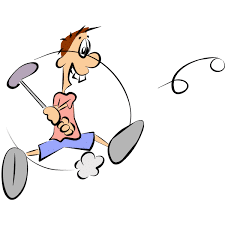
Unlocking the Secrets of the Golf Draw: Everything You Need to Know
Are you looking to add more power and accuracy to your golf game? The key may lie in mastering the elusive golf draw.
Whether you're a seasoned pro or just starting out, understanding and incorporating the golf draw into your swing can make a significant difference in your performance on the course.
In this comprehensive guide, we delve deep into the secrets of the golf draw, revealing the techniques, tips, and tricks that will help you achieve that coveted controlled hook shot.
We'll break down the mechanics of the draw, explaining the physics behind it and how to manipulate clubface angle and swing path to produce the desired outcome.
But it's not just about technique – we'll also explore the mental aspects of executing the golf draw, providing strategies and mindset shifts to build confidence and consistency.
With expert insights from golf professionals and practical exercises to reinforce your learning, this guide is your roadmap to unlocking the secrets of the golf draw.
Get ready to take your golf game to new heights. It's time to master the golf draw and experience the thrill of hitting accurate, powerful shots consistently.
Understanding the golf draw: What is it and why is it important?
The golf draw is a shot that starts to the right of the target (for a right-handed golfer) and then curves back towards the target. It is a controlled hook shot that can add distance and accuracy to your game. Mastering the golf draw allows you to navigate obstacles on the course, such as trees or doglegs, with ease.
To achieve a draw, you need to have a slightly closed clubface at impact and an inside-to-out swing path. This combination imparts a sidespin on the ball, causing it to curve from right to left.
The golf draw is a sought-after shot because it allows you to hit the ball farther and also provides better control over the ball flight.
The science behind the golf draw: How does it work?
To understand the science behind the golf draw, we need to delve into the physics of the golf swing. When you strike the ball with a slightly closed clubface, it creates a sidespin on the ball.
This sidespin interacts with the dimples on the ball's surface, causing it to curve in the air.
The inside-to-out swing path is crucial in generating the desired draw effect. By swinging from the inside, you are able to create an angle of attack that promotes a right-to-left ball flight.
The combination of the closed clubface and the inside-to-out swing path results in the ball curving back towards the target.
Benefits of incorporating the golf draw into your game
Incorporating the golf draw into your game can yield numerous benefits. First and foremost, it adds distance to your shots.
The sidespin created by the draw imparts extra lift on the ball, resulting in longer carry and roll. This can be especially advantageous on long par 4s or par 5s, where distance is key.
The draw also provides better control over your ball flight. By intentionally curving the ball from right to left, you can navigate hazards and position yourself for optimal approach shots.
Additionally, the draw can help you shape shots around corners or tight fairways, giving you a strategic advantage on the course.
Common misconceptions about the golf draw
There are several misconceptions surrounding the golf draw that can hinder players from incorporating it into their game. One common misconception is that the draw is only for experienced golfers.
In reality, golfers of all skill levels can benefit from mastering the draw. It's a skill that can be learned and developed over time.
Another misconception is that the draw is solely dependent on physical strength. While having a strong swing certainly helps, the draw is more about technique and timing.
By understanding the mechanics of the draw and practicing the correct swing path and clubface angle, even golfers with average strength can achieve a consistent draw.
Step-by-step guide to achieving the perfect golf draw
Now that we have covered the basics, let's dive into a step-by-step guide to achieving the perfect golf draw.
Step 1: Grip the club correctly - Start by placing your hands on the club with a slightly stronger grip. This means rotating your hands slightly to the right (for a right-handed golfer) on the grip.
Step 2: Align your body and clubface - Aim your body and clubface to the right of the target. This will help create the initial starting direction of the draw.
Step 3: Swing with an inside-to-out path - During the backswing, focus on swinging the club on a slightly inside path. On the downswing, make sure to swing from the inside to the outside, following a path that is slightly to the right of the target line.
Step 4: Close the clubface at impact - As you swing through the ball, be mindful of your clubface position. Aim to have a slightly closed clubface at impact to create the necessary sidespin for the draw.
Step 5: Practice, practice, practice - Like any skill in golf, mastering the draw requires consistent practice. Spend time on the driving range working on your swing path and clubface angle until you can consistently produce a controlled draw.
Drills and exercises to improve your ability to hit a draw
To further enhance your ability to hit a draw, there are several drills and exercises you can incorporate into your practice routine.
1. Alignment sticks drill - Set up two alignment sticks parallel to each other, slightly to the right of your target. Practice hitting shots while ensuring your clubhead travels between the alignment sticks, promoting an inside-to-out swing path.
2. Impact bag drill - Use an impact bag or a stack of towels to simulate impact. Focus on hitting the bag with a slightly closed clubface, emphasizing the feeling of a strong release through the ball.
3. Swing plane drill - Place a headcover or a small object just outside your target line. Practice swinging the club underneath the object, promoting an inside-to-out swing path.
Troubleshooting: Fixing common mistakes when attempting the golf draw
As you work on incorporating the golf draw into your game, you may encounter some common mistakes. Let's address a few of them and provide solutions to help you troubleshoot.
Mistake 1: Overdoing the draw - It's common for golfers to exaggerate the draw, resulting in a hook or a pull. To fix this, focus on making subtle adjustments to your swing path and clubface angle. Gradually increase the draw until you find the right balance.
Mistake 2: Inconsistent swing path - Inconsistent swing path can lead to inconsistent draws. Pay attention to your swing path and ensure it remains inside-to-out on every swing. Practice with alignment aids to reinforce the correct path.
Mistake 3: Rushing the downswing - Many golfers rush their downswing, leading to a loss of control and accuracy. Take your time during the downswing, focusing on a smooth and controlled transition from backswing to impact.
Using the golf draw strategically on the course
Now that you have mastered the golf draw, it's time to put it into action strategically on the course. Here are a few scenarios where the draw can be particularly advantageous:
1. Dogleg holes - On dogleg holes, where the fairway bends to the left, a right-to-left draw can help you navigate the corner and position yourself for a shorter approach shot.
2. Narrow fairways - When faced with tight fairways, a draw can help you shape your shots around trees or other obstacles, providing more room for error.
3. Par 5s - On long par 5s, a well-executed draw can add significant distance to your drive, setting you up for a chance to reach the green in two.
Advanced techniques for mastering the golf draw
Once you have become comfortable with the basic draw, there are advanced techniques you can explore to further enhance your mastery of the shot.
1. Stinger draw - The stinger draw is a low, penetrating draw shot that is particularly useful in windy conditions. To execute the stinger draw, focus on a more compact swing and a lower ball flight.
2. Controlled fade to draw - By mastering both the fade and the draw shots, you can have even more control over your ball flight. Experiment with hitting a controlled fade that curves from left to right and then transitions into a draw.
Conclusion: Embracing the golf draw and taking your game to the next level
Congratulations! You have now unlocked the secrets of the golf draw. By understanding the mechanics, practicing the correct technique, and incorporating the draw strategically on the course, you can take your golf game to new heights.
Remember, mastering the golf draw takes time and dedication. Be patient with yourself, focus on consistent practice, and embrace the challenge.
With determination and the right mindset, you'll soon be hitting accurate, powerful shots consistently and impressing your fellow golfers on the course.
So, what are you waiting for? Grab your clubs, head to the driving range, and start working on your golf draw today. The rewards will be well worth the effort. Happy golfing!
